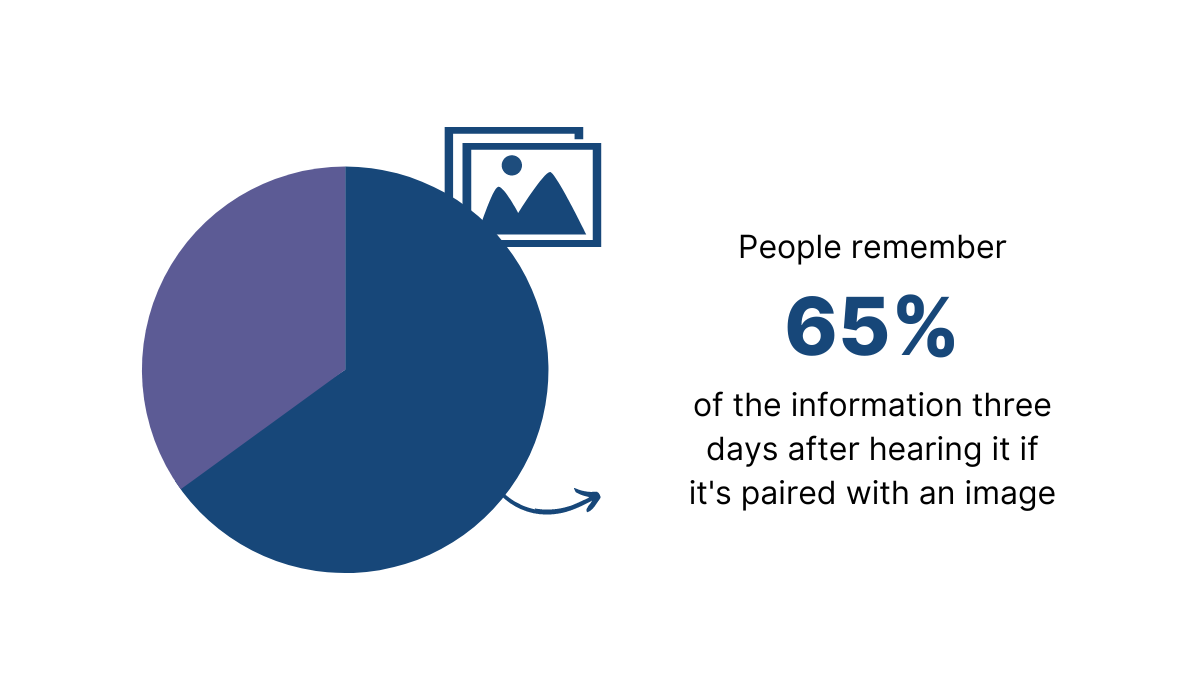As technical writers and customer experience professionals, our goal is to make sure our content is not only informative, but also effectively conveyed, guaranteeing the best user experience possible.
But how exactly do we transform intricate, dense information into content that resonates, engages, and educates? The answer lies in the strategic use of visuals in technical documentation.
In most cases, the right visuals can be the difference between clarity and confusion. In this article, we’re exploring the profound impact of visuals in technical documentation and how they can elevate the user's journey from mere understanding to genuine engagement.
Quick Takeaways
- Visuals in technical documentation amplify messages, enhancing clarity and user resonance.
- Different visuals, from screenshots to interactive elements, cater to specific documentation needs.
- Knowing when to use visuals ensures enhanced clarity, engagement, and inclusivity in documentation.
- A CCMS streamlines visual integration, offering centralized storage, version control, and consistent formatting.
Why Are Visuals Important in Technical Documentation
In the world of technical documentation, we often grapple with the challenge of conveying complex concepts in a manner that's both clear and engaging. While our words lay the foundation, visuals act as the pillars that elevate our content. In fact, 67% of people complete tasks better when they have visual instructions instead of only textual.

Visuals in technical documentation are powerful tools that amplify our message, ensuring it resonates with our users. As technical writers and customer experience professionals, embracing visuals means we're not just sharing information, but rather creating positive user experiences.
1. Simplifying Complex Ideas
Technical topics can sometimes feel like a tangled web. Visuals, be it diagrams, flowcharts, or infographics, can clarify these complexities. They break down information into digestible chunks, making it easier for users to understand without getting lost in unfamiliar terms.
2. Enhancing Engagement
Let's face it: pages upon pages of unbroken text can be daunting. Visuals break the monotony, adding a splash of color and variety. They not only capture attention, but also keep users engaged, ensuring they stay with you till the end.
3. Bridging the Knowledge Gap
Not all users come with the same background knowledge. While some might be well-versed with the technicalities, others might be novices. Visuals act as a bridge, catering to both experts and beginners. They provide a quick reference point, ensuring everyone's on the same page.
4. Enhancing User Experience
For customer experience professionals, the user's journey is paramount. Visuals enhance this journey, guiding users step-by-step, especially in tutorials or how-to guides. They provide visual cues, ensuring users don't feel lost or overwhelmed.
5. Boosting Memory Retention
Ever heard the saying, "A picture is worth a thousand words"? There's science behind it. Studies suggest that humans process visuals faster than text and retain visual information longer. In fact, people remember 65% of information three days after hearing it if it’s paired with an image.

By incorporating visuals, we're not just making our content appealing, but also memorable.
When to Use Visuals in Technical Documentation
Navigating the landscape of technical documentation, we often find ourselves at crossroads: to illustrate or to elaborate?
While visuals are powerful, knowing when to use them can make all the difference. Let's explore the key moments when visuals can truly shine in technical documentation:
- Breaking down complex processes. Use flowcharts or diagrams to simplify intricate procedures.
- Highlighting key points. Emphasize crucial information with callout boxes, icons, or infographics.
- Demonstrating real-world applications. Screenshots and real-life images offer tangible references for software or products.
- Explaining abstract topics. Diagrams and graphs can make abstract ideas more understandable.
- Enhancing user interactivity. Interactive documentation benefits from clickable icons, flowcharts, or embedded videos.
- Offering visual breaks. Intersperse long texts with visuals to provide relief and maintain reader interest.
- Catering to diverse learning styles. Incorporate visuals to resonate with both textual and visual learners.
The decision to use visuals isn't just about beautifying content. It's about enhancing clarity, boosting engagement, and ensuring inclusivity.
As technical writers and customer experience aficionados, our goal is to communicate effectively. And sometimes, a well-placed visual can speak volumes more than a page full of words.
Types of Visuals Used in Technical Documentation
The right visual can be a guiding light for users navigating complex content. But with the many types of visuals at our disposal, which ones should we lean on? Let's explore the most common types and their best applications.

- Screenshots. Capture real-time images of software interfaces or web pages, offering readers a direct glimpse into the system they're learning about.
- Diagrams. Break down intricate processes or systems, making them easier to grasp and visualize.
- Flowcharts. Map out workflows or sequences, showcasing the step-by-step progression of processes.
- Infographics. Combine data and graphics to represent information in a concise, engaging manner.
- Graphs and charts. Display statistical data, trends, or comparisons, making numbers more digestible.
- Videos. Offer dynamic, step-by-step tutorials or demonstrations, catering to those who prefer visual learning.
- GIFs. Provide short, looping visuals, ideal for showcasing quick processes or changes over time.
- Icons. Highlight key points, categories, or sections, making navigation and comprehension smoother.
- Interactive elements. Engage readers with clickable components, expanding details, or interactive simulations, enhancing the user experience.
Incorporating the right visuals not only makes your content visually pleasing, but also boosts its clarity and impact. Remember that sometimes, a well-chosen visual can convey what words might take pages to explain.
How to Integrate Visuals into Technical Documentation
A Component Content Management System (CCMS) isn't just another tool in our technical writing arsenal. It's a game-changer, especially when it comes to integrating visuals.
Let's explore how a CCMS can revolutionize the way we incorporate visuals into our technical documentation:
Centralized Storage
A CCMS offers a unified repository for all visuals, ensuring that images, diagrams, and videos are easily accessible and organized.
Version Control
Ever made edits to a visual and wished you could revert to its previous version? With a CCMS, every change to a visual is tracked, allowing for easy retrieval of past versions.
Consistent Formatting
A CCMS ensures that visuals maintain a consistent look and feel across documents, enhancing brand consistency and professionalism.
Efficient Reusability
No need to reinvent the wheel. With a CCMS, visuals can be reused across multiple documents, ensuring consistency and saving time.
Collaborative Editing
Team collaboration is a breeze with a CCMS. Multiple contributors can work on, annotate, or review a visual simultaneously, streamlining the creation process.
Metadata Tagging
By tagging visuals with relevant metadata in a CCMS, they become easily searchable, making it quicker to find the right visual for the right context.
Automated Updates
If a visual is updated in the CCMS, it can be set to automatically update in every instance where it's used, ensuring that documentation always features the most current visuals.
Optimized Delivery
A CCMS can adapt visuals based on the output format, ensuring that images and diagrams look crisp whether viewed on a desktop, tablet, or mobile device.
Harnessing the power of a CCMS, technical writers and customer experience professionals can seamlessly integrate visuals into their documentation. As a result, you’ll create clearer, more engaging, and consistently branded content that resonates with its audience.
Create Effective Content Today with Heretto
In the digital age, where information is abundant and attention spans are fleeting, the role of visuals in technical documentation cannot be overstated.
They not only simplify complex ideas but also enhance engagement, bridge knowledge gaps, and elevate the overall user experience. Whether it's a screenshot that offers a real-time glimpse or an interactive element that engages the user, visuals are the unsung heroes that bring our content to life.
Ready to perfect your content creation process? Heretto CCMS can help. Get started today by booking a demo, or learn more about Heretto.




